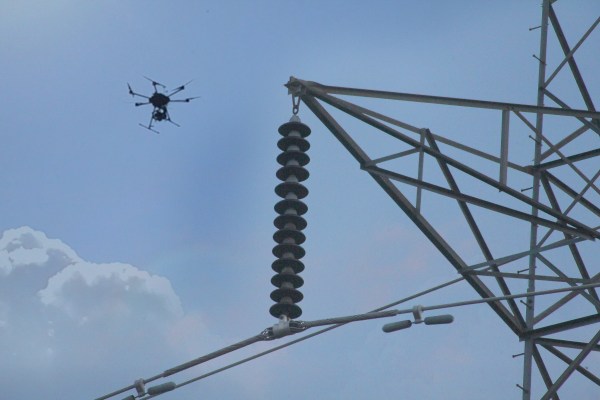Automated inspection company Avitas Systems, which is a GE Venture company, is using Nvidia’s DGX-1 and DGX Station to train its neural-network-based artificial intelligence to be able to quickly and consistently identify defects in industrial equipment.
Avitas Systems uses a range of robotic equipment to monitor things like oil and gas pipelines, coolant towers and other crucial equipment, including aerial and underwater drones – and Nvidia’s help means it can create software that can help these bots spot the slightest bit of corrosion or variance in equipment before it becomes a dangerous problem.
Alex Tepper, Avitas founder and head of corporate and business development, explained in an interview that GE has been helping customers with industrial inspections for a long time, and has found that these customers are spending hundreds of millions of dollars on inspections that involve a person driving out to, or flying a helicopter above an asset. These aren’t methods that generate fool-proof results, of course, and there’s a lot that can’t be seen reliably with the naked eye.
“We’re analyzing the results from those robotics to do automated defect recognition, which is a fancy way of saying interpreting those sensor results, applying AI to them, so that we can figure out if there are any defects being sensed, whether it’s corrosion, micro-fractures, hot and cold spots – oftentimes defects that the human eye can’t see.”
[gallery ids="1537134,1537133,1537132,1537130,1537129,1537127,1537126"]
Additionally, Avitas can provide reliable replication of observation conditions with automated inspection methods – robots can take the same photograph or sensor reading from the same perspective over and over again. And they can help shift defect monitoring from a time-based operation to a risk-based one: Instead of sending out a person to check an asset on a pre-defined schedule, automated observation can target high-risk assets and keep them under pretty much constant watch.
Nvidia’s role in all this is processing of the resulting data via its DGX-1 supercomputer, and also through its DGX Station, which provides unique capabilities by offering analysis and processing capabilities at the edge – decoupled from the data center. Tepper says that more and more of their work involves running AI applications in areas where there isn’t a reliable connection to a central server – or even any connection at all, in some cases.
The DGX Station puts hundreds of CPUs in a power-efficient, portable form factor, and it’s just the start for Nvidia’s ambitions to bring supercomputing power to the field.
“Avitas started with a prototype version of our station, and soon they’ll be getting an upgrade to our DGX Station with Volta [launched in May], and that’ll be a huge performance gain,” explained Nvidia GM of DGX Systems Jim Hugh. “I think Alex and team are going to see a 3x performance in the activity there at a minimum, and it could even be greater for the inference activity they’re seeing.”
